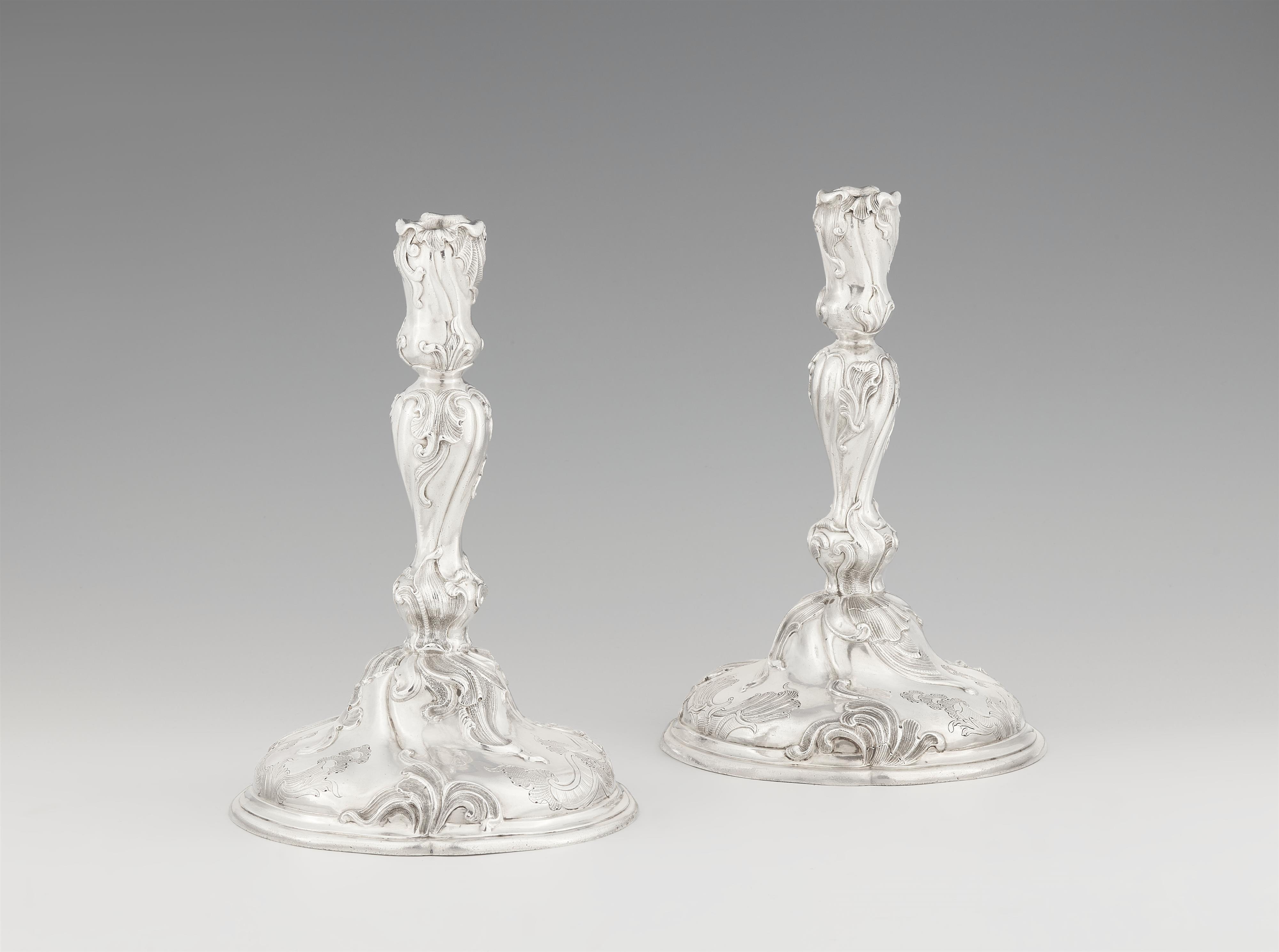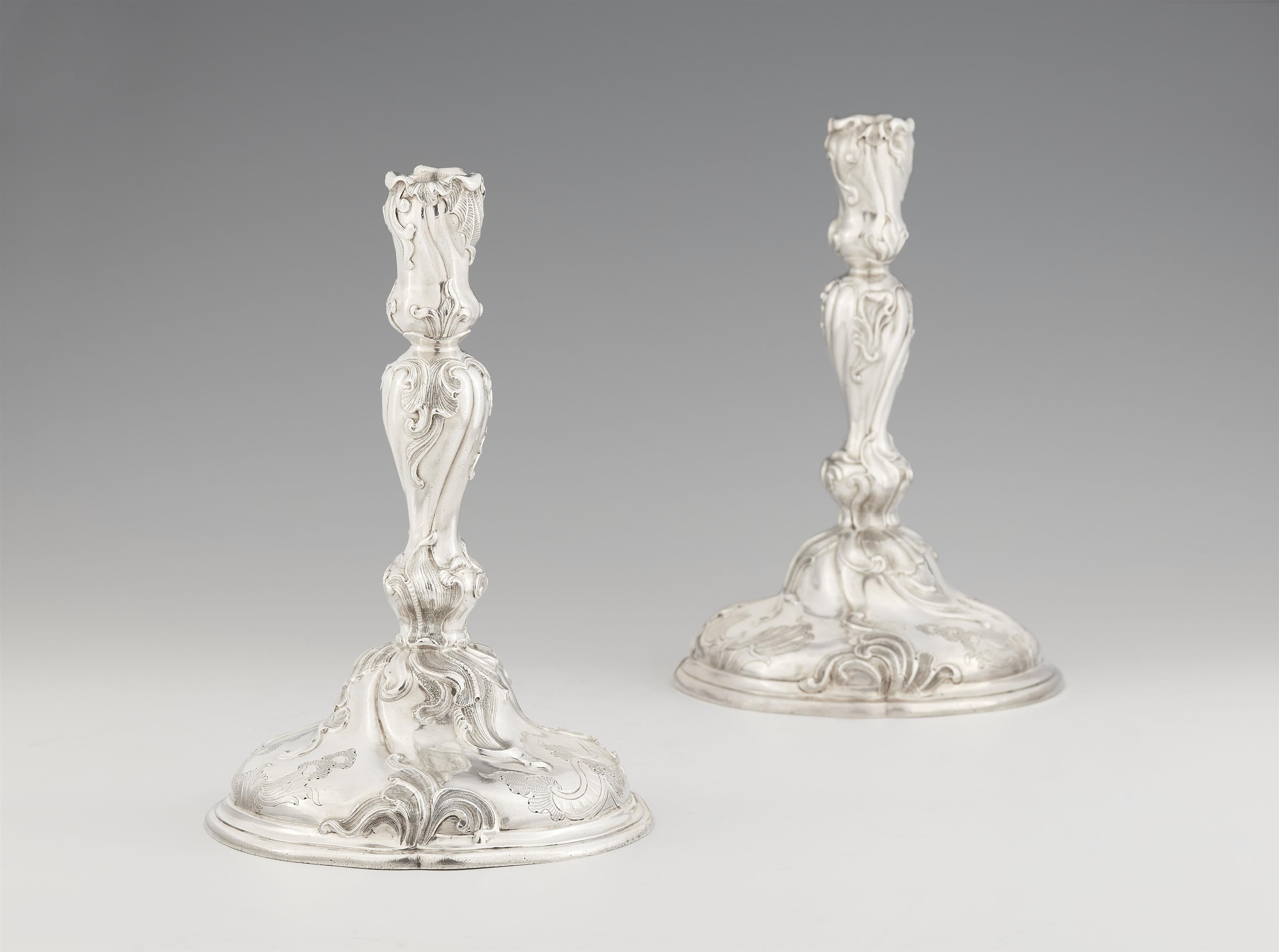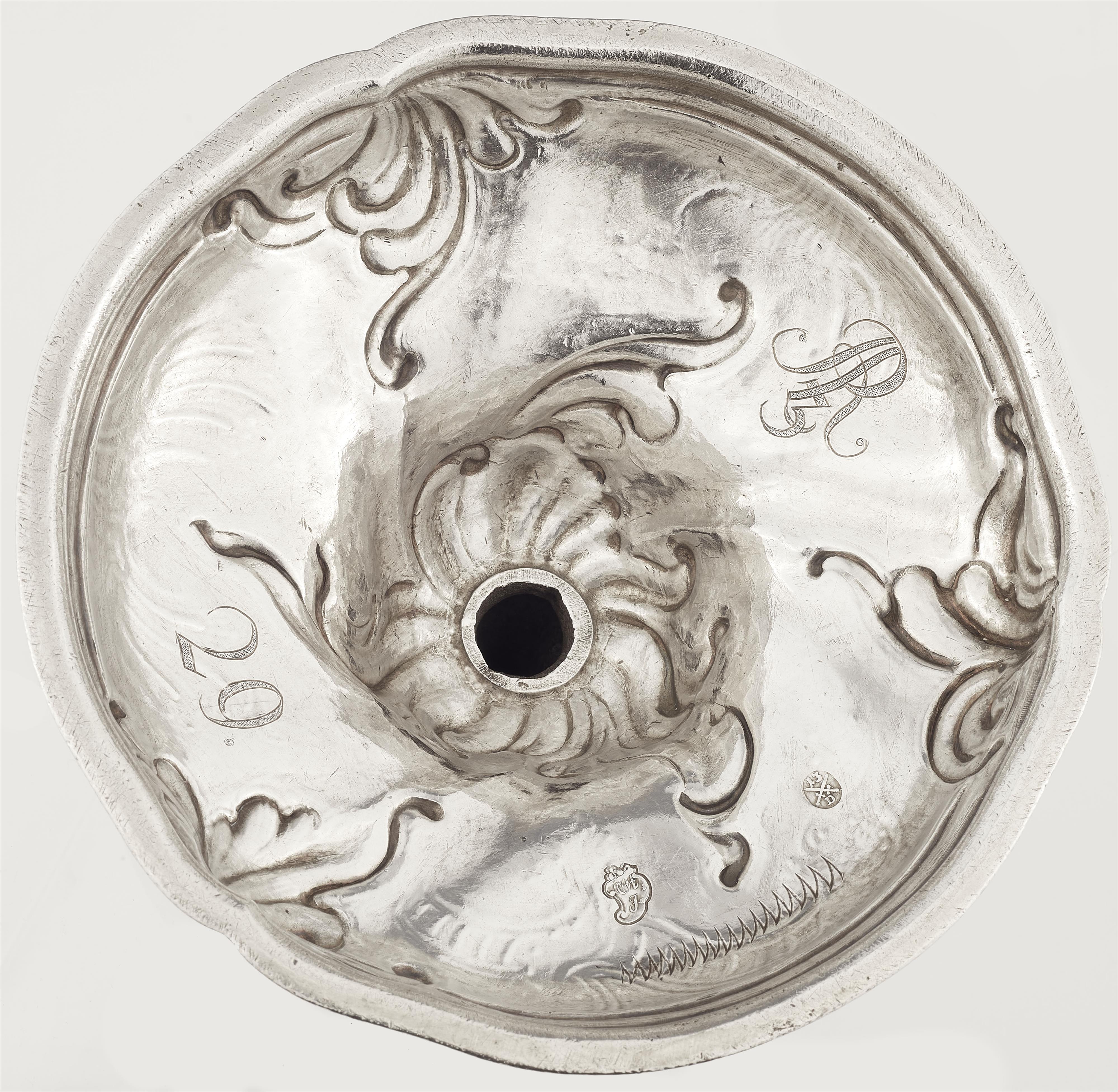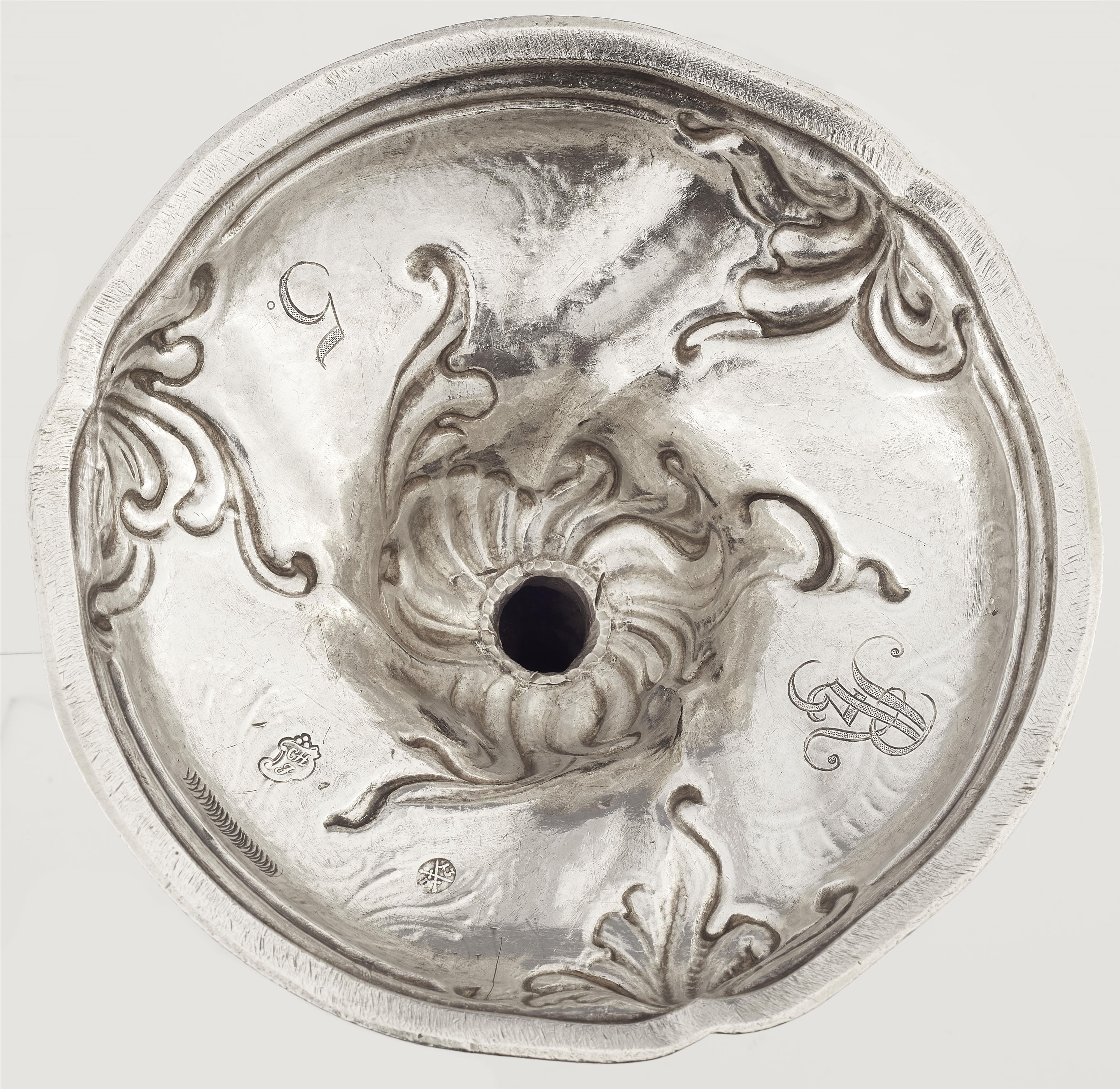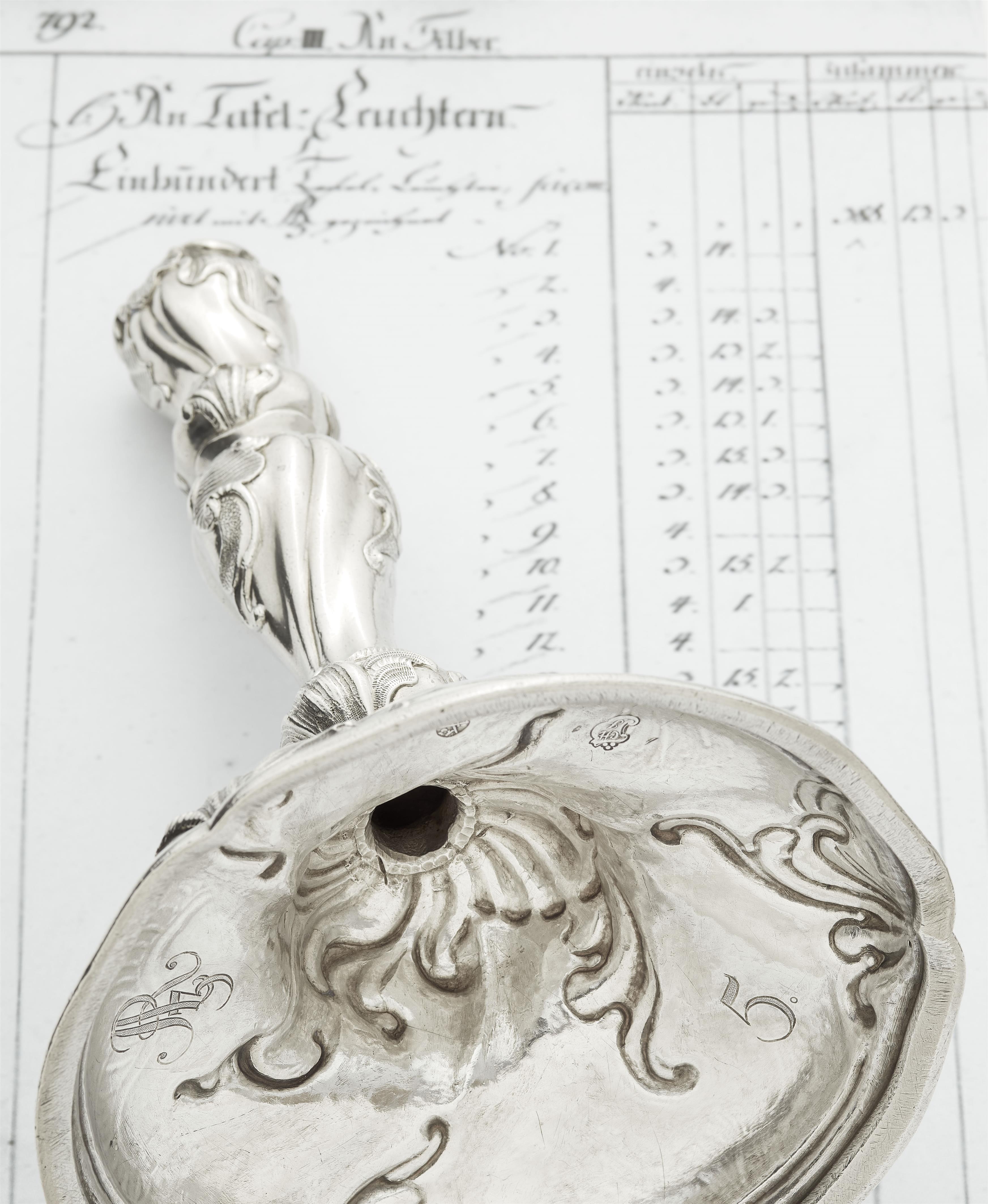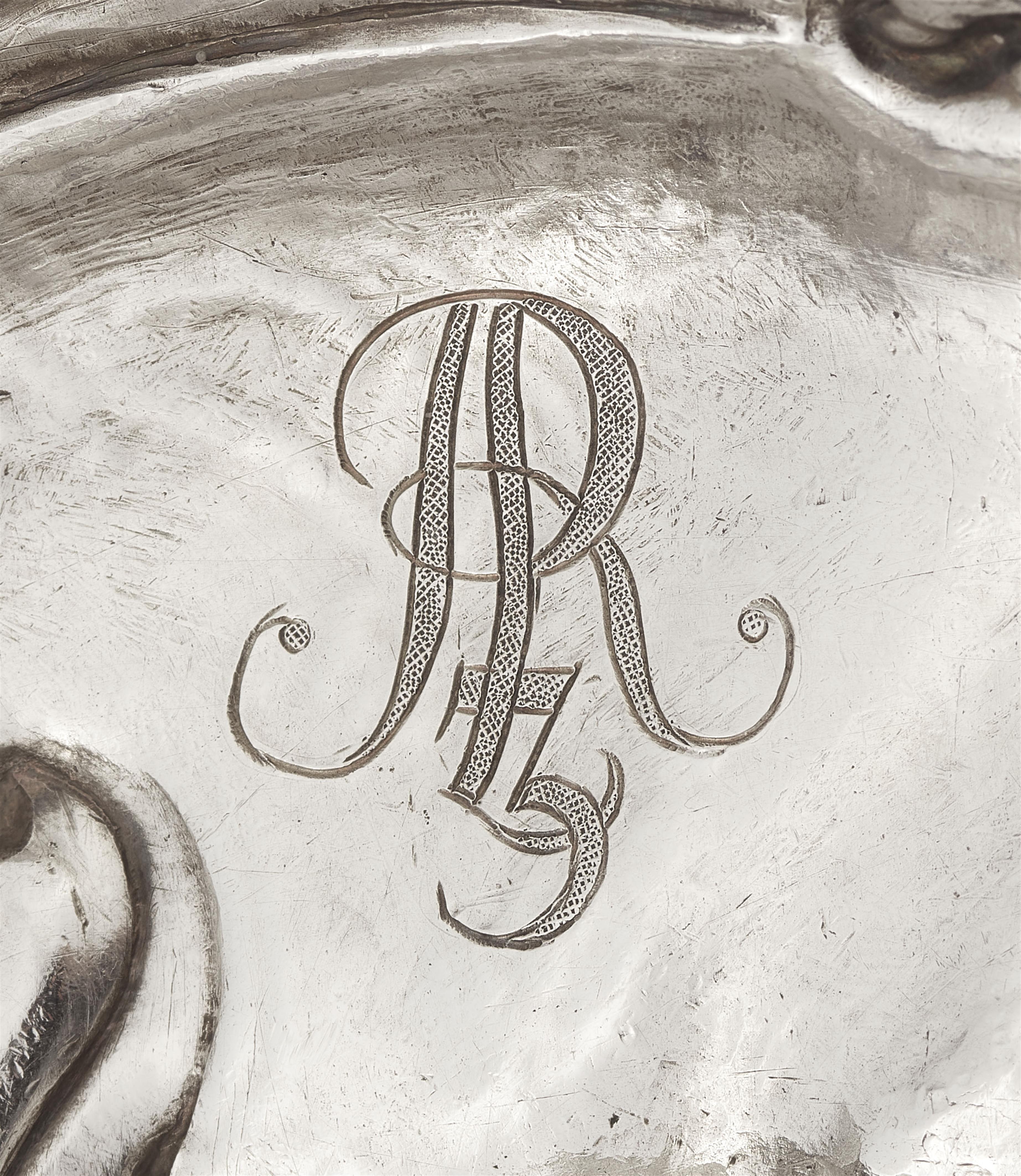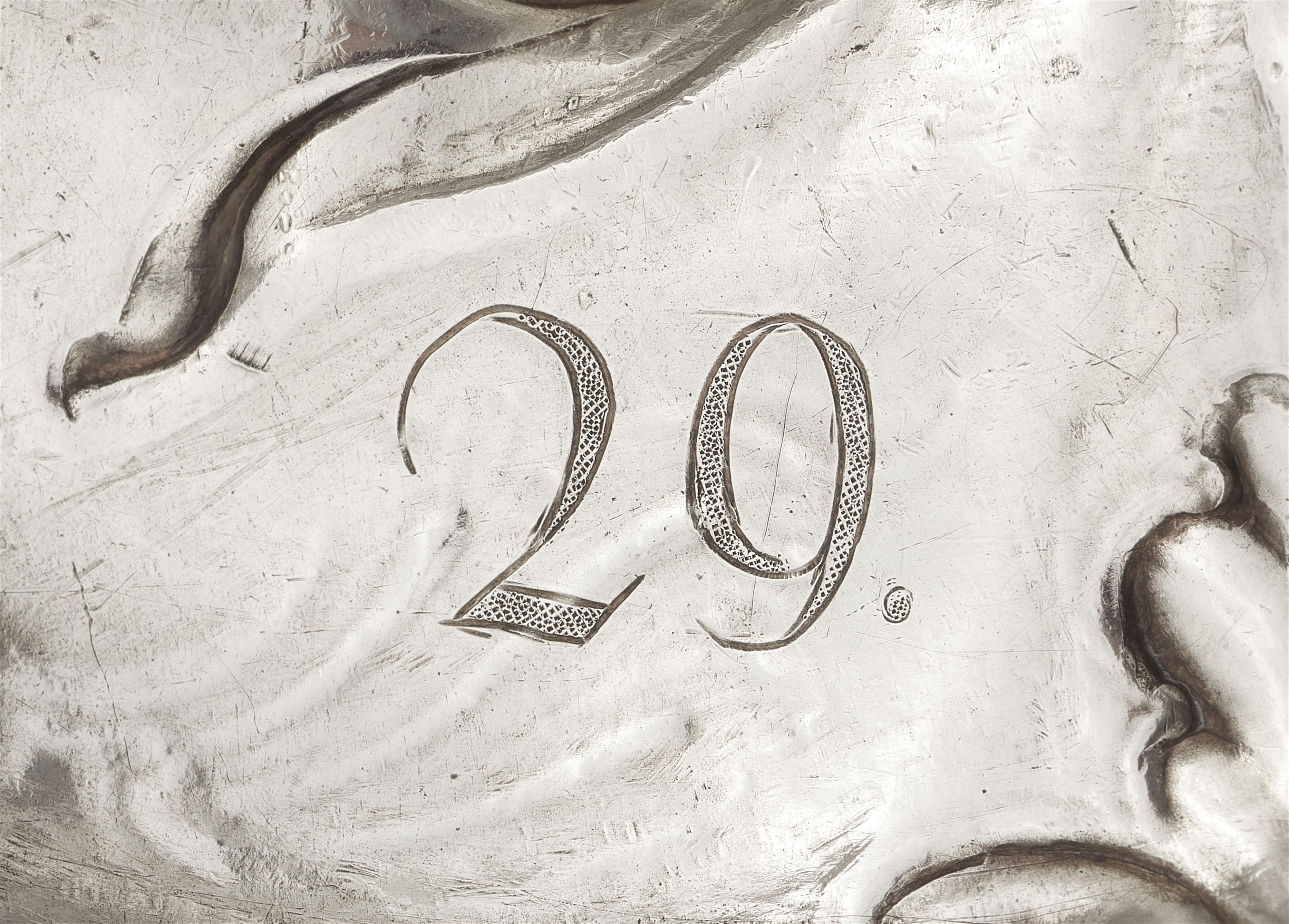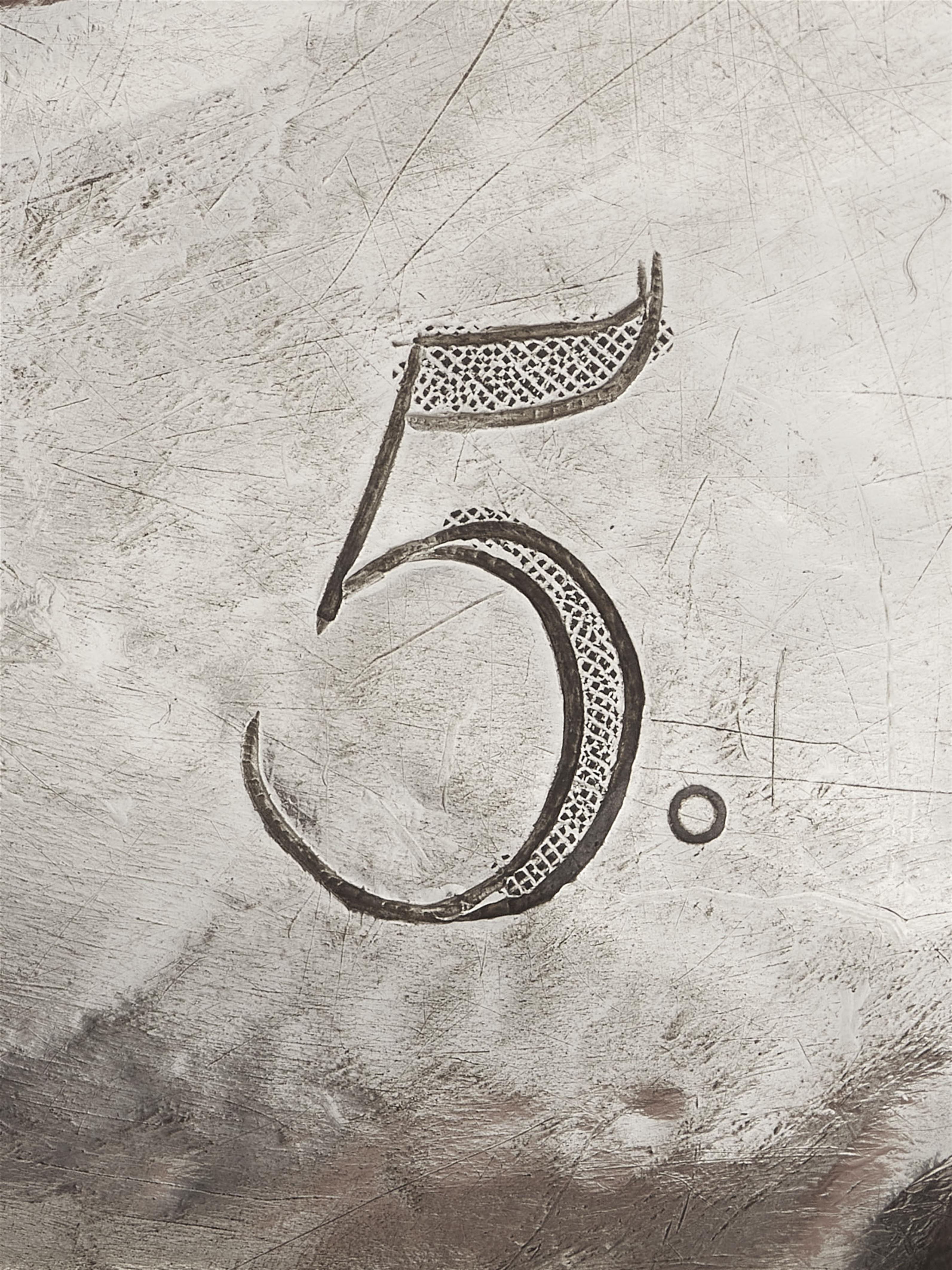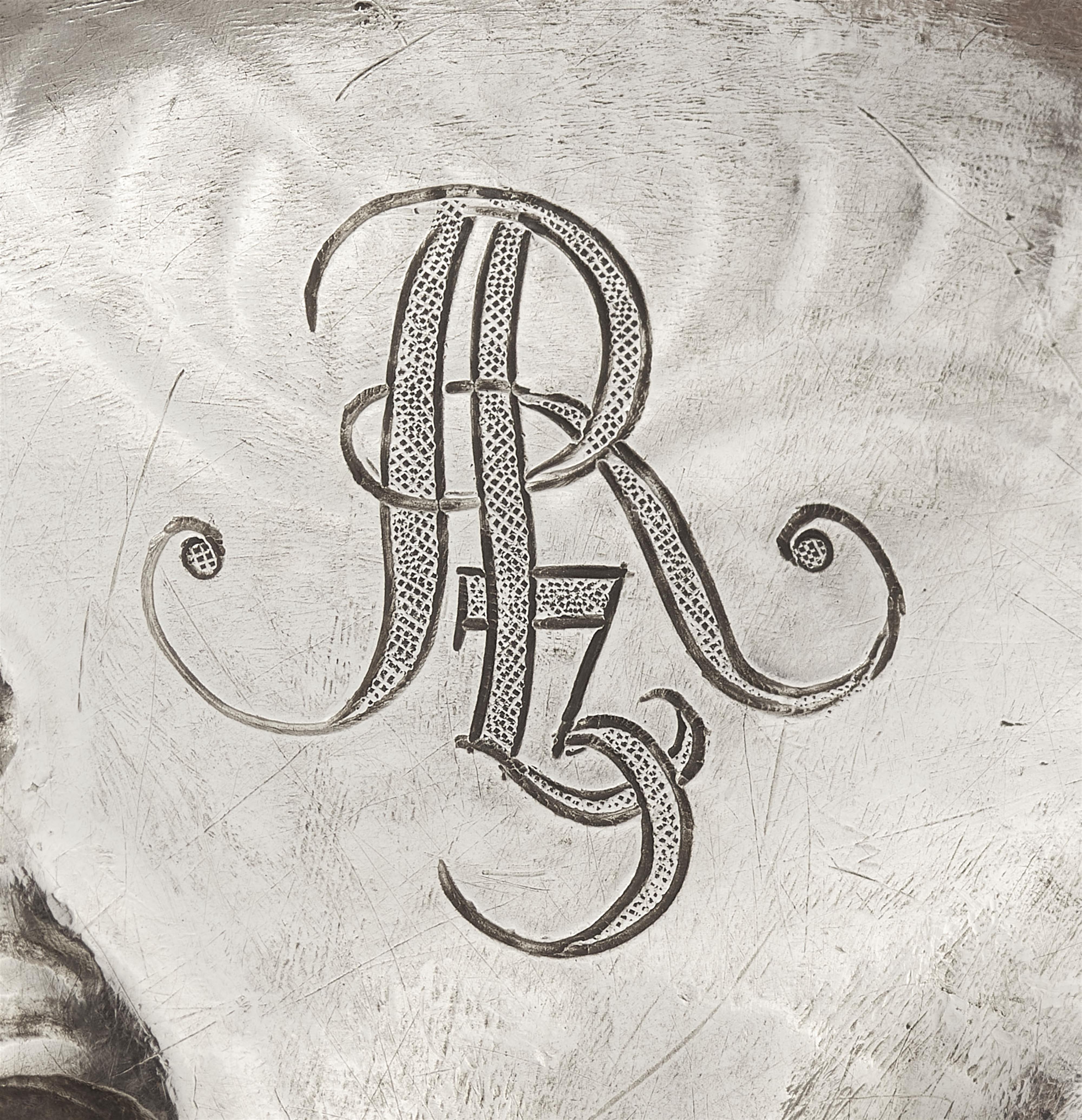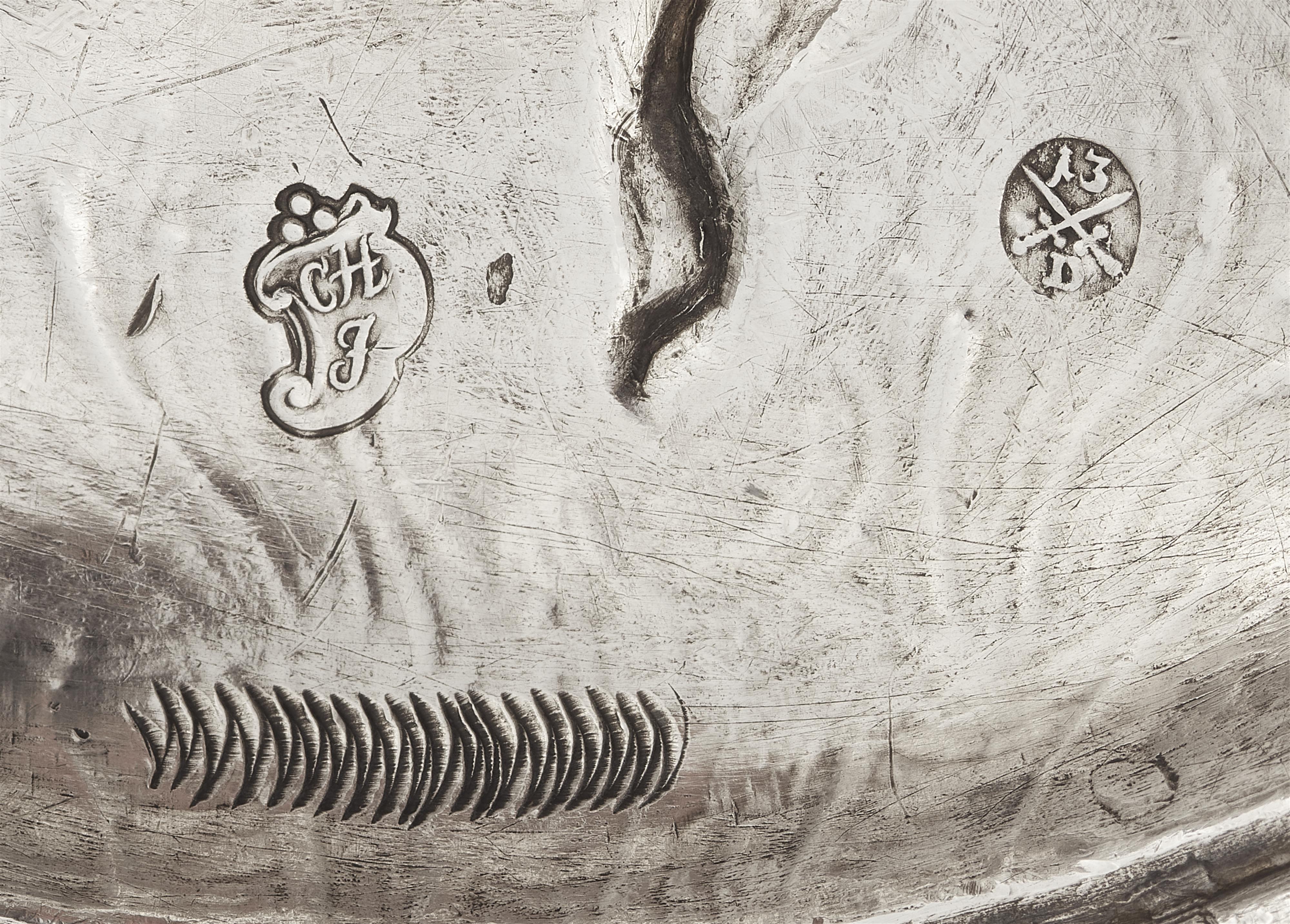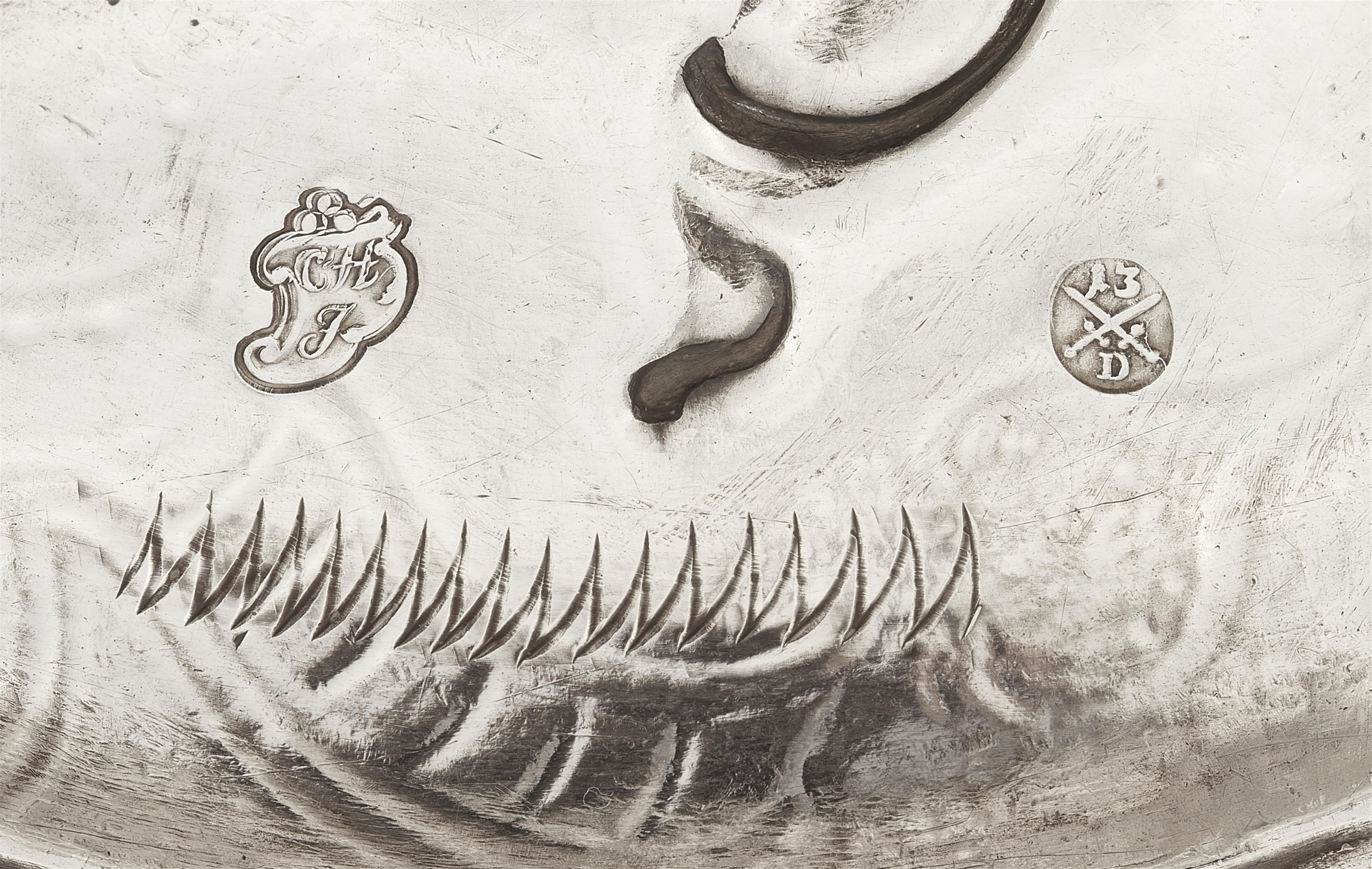From the Dresden court silver:
A pair of candlesticks made for Prince Elector August II of Saxony
Round scalloped bases with finely engraved and repoussé shellwork and acanthus amid twist fluting. The softly moulded baluster-form shafts with corresponding decor and vase form nozzles. Engraved to the underside with conjoined monogram "AR3" and the inventory numbers 5 and 29. H 23 cm, weight 1,857 g.
Marks of Christian Heinrich Ingermann, c. 1745.
Following the death of his father Augustus the Strong in Warsaw in 1733, Frederick Augustus II (1696 - 1763) became Elector of Saxony - and as Augustus III, the last Wettin in personal union, also King of Poland. In the same year he ordered a revision of the richly filled court silver collection and had some of the earlier services melted down. Others were added to and supplemented with the engraved monogram "A R 3" for Augustus Rex III. The present lot belongs to an extensive set of a total of 100 candlesticks commissioned in around 1745 to supplement one of the silver services for the daily use of the royal family.
The Dresden based Ingermann family of goldsmiths played a significant role in the redesign of the court silver: Paul Ingermann (c. 1670 - 1752) held the title of court silversmith under Augustus the Strong as early as 1728. Among his sons, Christian Heinrich (c. 1713 - 1778) apparently played a prominent role. In 1732, at the age of only 19 (!), he became a master craftsman and, according to the "Hof- und Staatskalender" (Court and State Calendar), was employed by the Silver Chamber as a Royal Court Jeweller and Goldsmith as of 1750.
The inventory of the court silver collection of 1789 lists "Einhundert Tafel-Leuchter, faconirt mit AR3 gezeichnet" (one hundred table candlesticks, moulded and inscribed AR3) with the inventory numbers 1 to 100. For each item, the weight is noted in marks, lots and quents, whereby one mark corresponds to 16 lots - and one lot in turn to 4 quents.
The "Cologne mark", which was also used in Saxony, corresponded to approx. 233.81 g. A comparison of the data listed in the inventory with the now recorded individual weights in grams results in astonishingly precise correspondences with only minimal tolerance deviations.
No. 5 3 Mk. 14 Lt. 3 qu. converted 916.92 g - actual weight 916 g.
No. 29 4 Mk. 2 qu. converted 938.89 g - actual weight 939 g.
In 1904, the Berlin magazine "Die Woche" published an article about the Dresden court silver collection, to which we owe the somewhat grainy photographs, so far the only surviving photographs of the collection. The picture shows a built-in cabinet and one can recognise some of the candlesticks in the upper compartments (cf. Arnold, Dresdner Hofsilber des 18. Jahrhunderts, op. cit., pp. 14, 19, 30 ff.).
A pair with the inventory numbers 77 and 87 is housed in the Berlin Museum of Decorative Arts (inv. no. W 1963, 13 and 14).
A rare set of four candelabra was sold at Lempertz in autumn 2021 (auction 1184, lot 515).
Provenance
Fritz Payer art dealership, Zurich, 1983; German private collection.
Literature
Cf. a pair of candelabra by Ingermann in the Thyssen-Bornemisza, illus. in Müller, European Silver, London 1986, no. 75. For more on the court silver see esp. Arnold, Dresdner Hofsilber des 18. Jahrhunderts, Publikation der Kulturstiftung der Länder und der Staatlichen Kunstsammlungen Dresden, Berlin/Dresden 1994, p. 32 ff., and for Ingermann's maker's mark ibid. p. 50.

